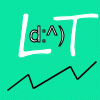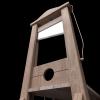Trend Change part II
#1

Posted 13 August 2007 - 11:53 PM
#2

Posted 14 August 2007 - 06:47 AM
A current NYSE ratio-adjusted new highs-new lows indicator ((highs-lows)/(highs+lows)) is suggesting we may be closer to a trend change in a direction that might different than assumed. The blue curve is ratio adjusted to compensate for the increasing number of issues in the NYSE over the past 12 years or so. Similar patterns of extreme high-low indicator lows have coincided with a price low of some degree over the past 40+ years. It would not be surprising at all to see a higher low in the high-low indicator coinciding with a lower price low in the coming weeks or months, but a major price trend change to a bear market should exhibit more subdued positive high-low ratio extremes as posted in last year and a half of the 20th century. We have yet to see that pattern emerge over the past several months.

IMHO, there are better ways to present the high-low data than I have in this chart, such as a percentage of new highs or new lows relative to the number of issues traded on the NYSE, but this is all I have at my disposal at this moment.
FWIW
Randy N.
#3

Posted 14 August 2007 - 07:05 AM
Paul,
A current NYSE ratio-adjusted new highs-new lows indicator ((highs-lows)/(highs+lows)) is suggesting we may be closer to a trend change in a direction that might different than assumed. The blue curve is ratio adjusted to compensate for the increasing number of issues in the NYSE over the past 12 years or so. Similar patterns of extreme high-low indicator lows have coincided with a price low of some degree over the past 40+ years. It would not be surprising at all to see a higher low in the high-low indicator coinciding with a lower price low in the coming weeks or months, but a major price trend change to a bear market should exhibit more subdued positive high-low ratio extremes as posted in last year and a half of the 20th century. We have yet to see that pattern emerge over the past several months.
IMHO, there are better ways to present the high-low data than I have in this chart, such as a percentage of new highs or new lows relative to the number of issues traded on the NYSE, but this is all I have at my disposal at this moment.
FWIW
Randy N.
Greetings Randy,
My partner does an interesting study using weekly new highs lows. During periods of major trend change we see a lot of new highs and a lot of new lows at the same time. His model has given the major trend change last week. When the indicator advanced above 5% in May 2006 the SPX made an IT top the same week and an IT correction followed that lasted about 8-9 weeks. The SPX has been declining for only 3 weeks since topping in July. If the SPX followed a similar correlation to 2006 in terms of time then we are not even halfway through an IT correction. The SPX would not make a final bottom for another 5-6 weeks or until the week of September 10 or September 17.
I thank you for the CLX 5 day off sets indicator, I started a chart of it after seeings your and I like it, you do some amazing work with the CLX data.
Best,
Larry
#4

Posted 14 August 2007 - 08:50 AM
Defenders of the status quo are always stronger than reformers seeking change,
UNTIL the status quo self-destructs from its own corruption, and the reformers are free to build on its ashes.













